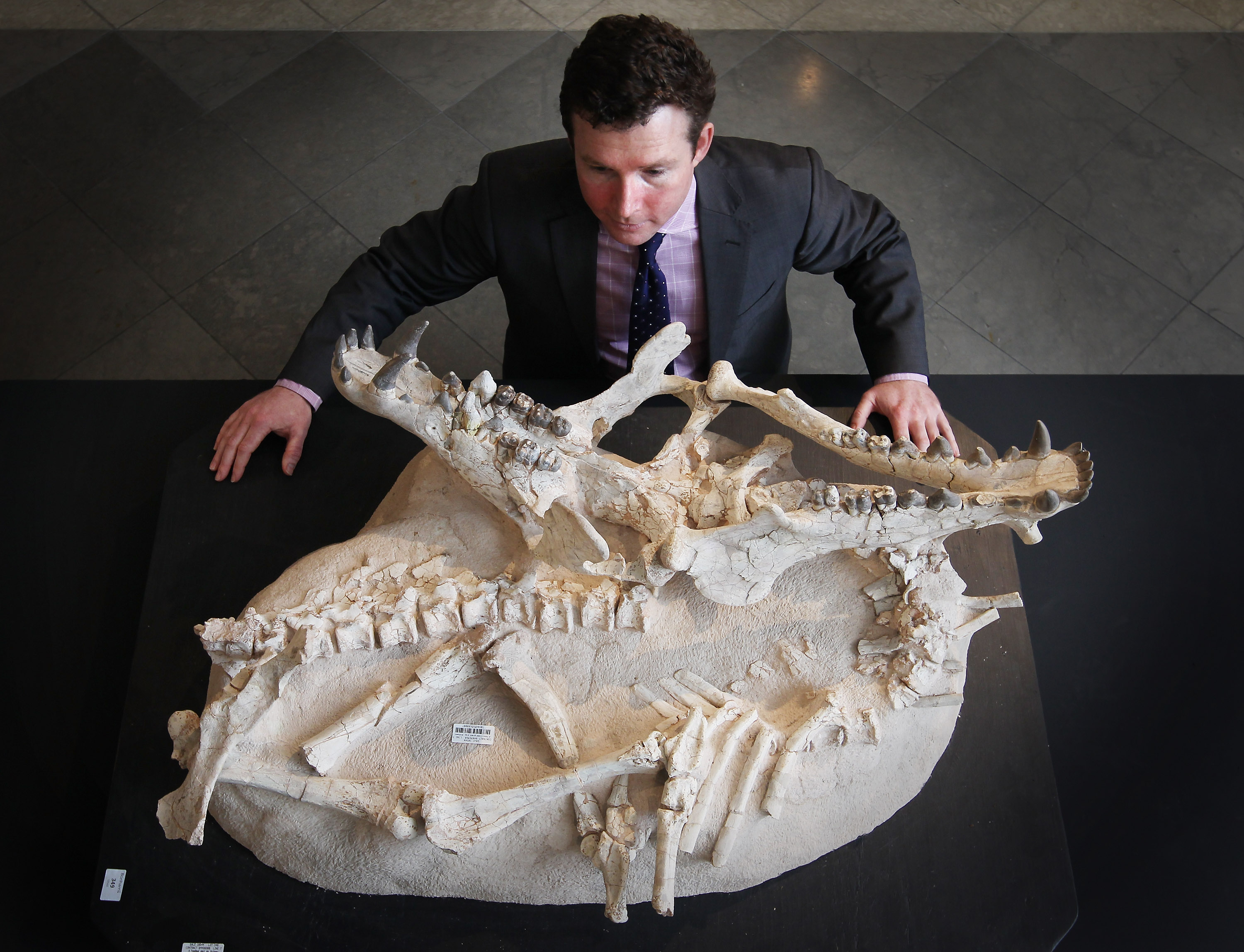Giant North American “hell pigs” may have munched on bones around 30 million years ago, while their smaller counterparts ripped through softer material, like flesh, new research finds.
The “hell pigs,” scientifically known as Archaeotherium (“ancient beast” in Greek), were a group of pig-like creatures that could be as tall as humans while standing on four legs and potentially weigh more than 2,000 pounds (1,000 kilograms).
You may like
“We can’t assume that they were doing the same thing,” Brynn Wooten, a doctoral candidate at Vanderbilt University in Tennessee, told Live Science.
Wooten presented preliminary findings from her research Thursday (Nov. 13) at the Society of Vertebrate Paleontology 2025 annual meeting. The findings haven’t been peer-reviewed yet, as Wooten and her colleagues still have to complete their research and submit it to a journal.
Whale of a pig
Archaeotherium roamed across North America from about 37 million to 23 million years ago. Despite their vaguely hoggish appearance, Archaeotherium was more closely related to whales and hippos than to pigs. Their heads were around 30% of their total body length (it varied by species), but their small brains meant they weren’t the brightest tools in the Paleogenic shed.
“Archaeotherium has a brain-to-body mass ratio similar to that of reptiles, so they were very unintelligent creatures,” Wooten said. “Their heads were massive, but they had little tiny brain cases.”
Researchers previously suggested that Archaeotherium could have been active predators, scavengers and/or vegetation strippers. Bite marks on the fossils of Poebrotherium — small camel relatives that used to roam North America — indicate that Archaeotherium may have hunted Poebrotherium and stored some of the carcasses for leftovers.

An Archaeotherium fossil at an auction in London in 2011. The photo is for illustrative purposes only; this fossil wasn’t part of the new research. (Image credit: Peter Macdiarmid/Getty Images)
For the new research, Wooten and Larisa DeSantis, an associate professor of biological sciences at Vanderbilt University, examined a variety of Archaeotherium teeth from different states, including Nebraska, South Dakota, Oregon and Colorado. By using dental microwear texture analysis, which involves creating 3D scans of the tooth surface with a powerful microscope, they could compare wear variation between the different Archaeotherium teeth.
On the whole, Archaeotherium was typically similar to peccaries (pig-like animals found in the Americas), which shear their food. However, wear on the larger-bodied Archaeotherium was statistically indistinguishable from that of lions and hyenas and indicative of an animal that crushed its food.
“It’s really interesting that the large ones are capable of crunching bones,” DeSantis told Live Science. “The small ones are not.”
The crushing wear could mean that the larger species engaged in more scavenging behaviors, potentially using their great size to bully other predators off their kills, the researchers suggested. On the other hand, the larger Archaeotherium could have been consuming more hard vegetarian foods, such as tubers or woody browse. The soft veggie option for smaller Archaeotherium may have been leaves and grasses.
So far, the dental analysis reveals only the texture of Archaeotherium food — not which species they ate. Wooten will now explore other research techniques, including calcium isotope analysis, to confirm whether bone was part of Archaeotherium’s diet.

